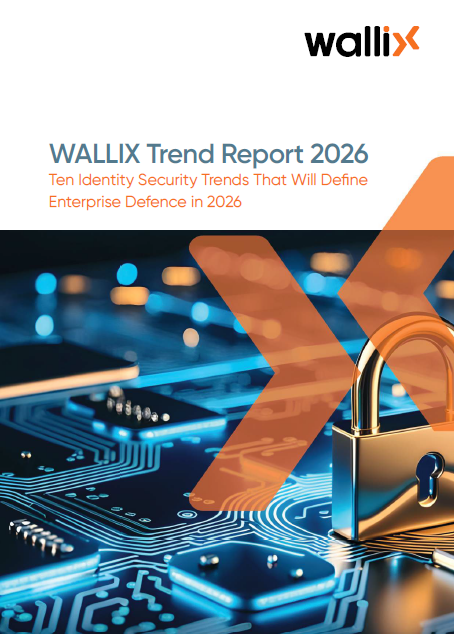Privileged Account and Session Management (PASM)
Securing privileged credentials constitutes a fundamental security objective for organizations worldwide. Privileged Account and Session Management (PASM) is a vital security control that protects an organization’s most vulnerable access points from external attackers and malicious insiders.

Workers can access cloud-based mining data via tablets to remotely view progress on site.
What PASM Means for Security
PASM functions as a cornerstone of Privileged Access Management (PAM). Though frequently used interchangeably, PASM explicitly addresses the discovery, vaulting, rotation, and monitoring of privileged credentials, plus privileged session oversight. This functionality extends to shared accounts and Application-to-Application Password Management (AAPM).
PASM delivers exceptional value through comprehensive visibility and control over privileged accounts and credentials that unlock an organization’s most critical systems and sensitive data. These tools create secure credential vaults while providing thorough session recording and precise access control.
Why Organizations Need Privileged Account and Session Management
Privileged credentials rank among the most valuable targets for attackers. Once stolen, these credentials let hackers establish persistence, traverse networks laterally, and steal sensitive data undetected. Industry reports consistently show that most significant breaches involve compromised privileged credentials.
Organizations lacking proper PASM capabilities encounter several problems:
First, they suffer from poor visibility into privileged account usage. Second, they experience delayed detection of compromised credentials. Third, they face compliance gaps with regulatory requirements. Fourth, they remain vulnerable to privilege escalation attacks.
Manual credential management fails at scale. Such approaches create inconsistencies, provide no audit trail, and expose security vulnerabilities that attackers quickly exploit. Security teams must implement automated solutions to address these challenges effectively.
Essential PASM Capabilities
Account Discovery: Identifies privileged accounts throughout on-premises and cloud environments, including forgotten and abandoned accounts that pose security risks.
Credential Management: Automatically rotates privileged passwords according to policy, eliminating static credentials and shrinking attack surfaces.
Time-Limited Access: Grants temporary privileges through approval workflows, enforcing least-privilege access principles.
Session Monitoring: Records and logs privileged sessions, tracking keystrokes and commands for security verification and compliance evidence.
Threat Detection: Spots unusual behavior during privileged sessions, with capabilities to terminate suspicious activities immediately.
Advanced implementations integrate with identity governance platforms, multi-factor authentication systems, and DevOps tools to secure development pipelines. Companies seeking comprehensive security must consider how these capabilities align with their existing infrastructure and security requirements.
Compliance Requirements
PASM tools help organizations meet compliance mandates across PCI DSS, HIPAA, SOX, GDPR, and other regulations. They generate comprehensive audit trails and activity reports for compliance assessments and security audits.
PCI DSS explicitly mandates unique identification for administrative users and requires that all system access be trackable to specific individuals—requirements that PASM directly addresses. Implementing robust PASM controls should be considered mandatory rather than optional for organizations handling credit card data.
Cloud-Based PASM
Cloud-based PASM platforms offer substantial advantages over legacy on-premises solutions. These modern implementations provide faster deployment, automatic updates, unlimited scalability, and minimal operational burden.
Organizations typically implement cloud PASM platforms in hours instead of months, with minimal infrastructure costs. These solutions deliver enterprise reliability through redundant architecture and built-in disaster recovery. Security teams benefit from continuous updates that address emerging threats without manual intervention.
Integration with Security Tools
PASM delivers maximum value when connected to other security systems:
Identity Governance platforms: For comprehensive user access reviews and certification
SIEM systems: To correlate privileged account activity with other security events
SOAR platforms: To automate incident response for suspicious privileged account usage
EDR solutions: To monitor endpoint behavior during privileged sessions
These connections create comprehensive security workflows that improve threat detection and speed incident response for compromised privileged accounts. The integration capabilities of PASM solutions should be carefully evaluated during the selection process.
PASM and Zero Trust
While PASM significantly strengthens security posture, experienced security leaders view it as one element of Zero Trust architecture. Combined with Privilege Elevation and Delegation Management (PEDM), PASM helps organizations enforce least-privilege principles throughout their infrastructure.
Mature PASM implementations continuously verify all privileged access, regardless of user identity, device type, or network location. This approach aligns with modern security frameworks that assume breach and verify explicitly.
Security teams implementing PASM should establish clear metrics, conduct detailed privilege audits, and develop staged deployment plans that secure critical systems and sensitive data first. By taking this methodical approach, organizations can realize immediate security benefits while building toward comprehensive privileged account protection.
Related resources
-
 WALLIX Trend Report 2026: The Identity Security Shifts Redefining Enterprise...
WALLIX Trend Report 2026: The Identity Security Shifts Redefining Enterprise...




